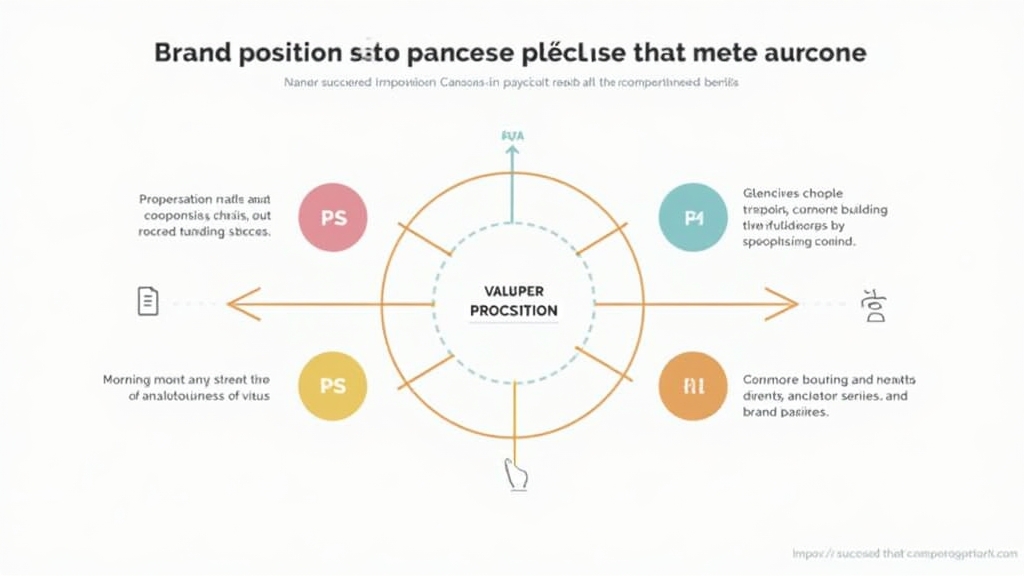Understanding Marketing: Key Brand Positioning Frameworks for Success
Introduction
Brand positioning is a crucial aspect of marketing that helps businesses define how they want to be perceived in the marketplace. It involves creating a unique image and identity that sets your brand apart from competitors. In today’s competitive landscape, effective brand positioning can significantly influence customer choices and loyalty. By understanding various frameworks, you can strategically position your brand to resonate with your target audience and achieve long-term success.
Overview of Brand Positioning Frameworks
What Are Brand Positioning Frameworks?
Brand positioning frameworks are structured approaches that help businesses identify their unique place in the market. These frameworks provide guidelines on how to communicate value to customers effectively. They often include elements like target audience, competitive analysis, and key messaging.
How Do They Benefit Businesses?
Using brand positioning frameworks allows businesses to clarify their goals and strategies. They help create consistent messaging across all marketing channels, ensuring that customers understand what the brand stands for. This clarity can lead to stronger customer relationships and improved sales performance.
The Classic Positioning Frameworks
The Four Ps of Marketing: Product, Price, Place, Promotion
The Four Ps framework focuses on four critical elements of marketing: product, price, place (distribution), and promotion (advertising). By analyzing these components, businesses can better understand how to meet customer needs while standing out from competitors.
The Unique Selling Proposition (USP) Model
The USP model emphasizes what makes a product or service unique compared to others in the market. It answers the question: “Why should customers choose this brand?” A strong USP highlights specific benefits or features that appeal directly to target audiences.
Modern Approaches to Brand Positioning
The Value Proposition Canvas
The Value Proposition Canvas is a tool designed to ensure that products or services align with customer needs. It breaks down customer profiles into jobs (tasks they want completed), pains (challenges faced), and gains (benefits desired). This approach helps brands tailor their offerings more precisely.
The Brand Pyramid Model
The Brand Pyramid Model illustrates different levels of brand development—from functional attributes at the base to emotional connections at the top. This model encourages brands to build deeper relationships with consumers by addressing both practical needs and emotional desires.
Implementing a Brand Positioning Framework
Steps to Choose the Right Framework for Your Business
Selecting an appropriate framework requires understanding your business goals and target audience. Start by evaluating your current position in the market—what works well? What doesn’t? Then consider which framework aligns best with your objectives.
Conducting Market Research and Competitor Analysis
Market research is essential for successful implementation of any framework. Analyze competitor strategies, consumer preferences, and industry trends using surveys or focus groups. This information will guide you in refining your positioning strategy effectively.
Case Studies: Successful Use of Brand Positioning Frameworks
Examples from Leading Brands in Various Industries
Many leading brands have successfully used positioning frameworks. For instance, Apple uses its USP model by emphasizing innovation as its core value proposition—setting it apart from other tech companies.
Lessons Learned from Effective Brand Strategies
These case studies show that clear communication about what makes a brand special leads directly to consumer loyalty. Brands must continuously adapt their strategies based on feedback and changing market conditions.
Measuring the Impact of Your Brand Positioning Strategy
Key Performance Indicators (KPIs) to Track
To measure effectiveness, track KPIs such as brand awareness, customer engagement rates, sales growth, and market share changes over time. These metrics provide insights into how well your branding efforts resonate with consumers.
Adjustments and Iterations Based on Results
Regularly review these metrics against set goals; if results fall short or exceed expectations significantly, adjustments may be necessary. Continuous improvement ensures that your branding remains relevant amidst evolving consumer preferences.
Conclusion
In summary, understanding various brand positioning frameworks is vital for any business aiming for success in today’s competitive environment. By leveraging classic models like the Four Ps alongside modern techniques such as the Value Proposition Canvas or Brand Pyramid Model, you can craft compelling strategies tailored specifically for your audience’s needs while adapting over time as markets change.
As we look ahead at future trends in marketing strategies—such as increased personalization through data analytics—the importance of effective brand positioning will only grow stronger.
📢 Explore More: Continue Your Journey!
If this article helped you understand branding better, check out How Consumer Behavior Influences Marketing Strategies! It covers powerful insights into why knowing your audience matters greatly when crafting effective campaigns.














![NEEWER 55W 18"/45cm Ring Light Kit [New Version], 5600K Dimmable ...](https://m.media-amazon.com/images/I/414QLqvZWLL._AC_.jpg)








